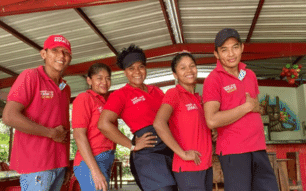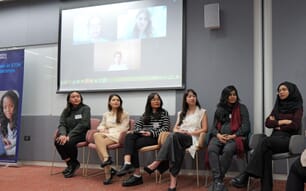What inspired you to move into aquaculture?
I married into this chaotic career in 1970. My husband, Harry James Saul, was working for the family business – the Harry Saul Minnow Farm – which had been established in 1951 by his father and two of his brothers. They had begun seining minnows from the White and Arkansas rivers and then selling them as bait in an effort to stay alive. Life was difficult for them. Several times one of them almost froze while seining and I’m sure there were countless times when they were way too hot to function correctly.
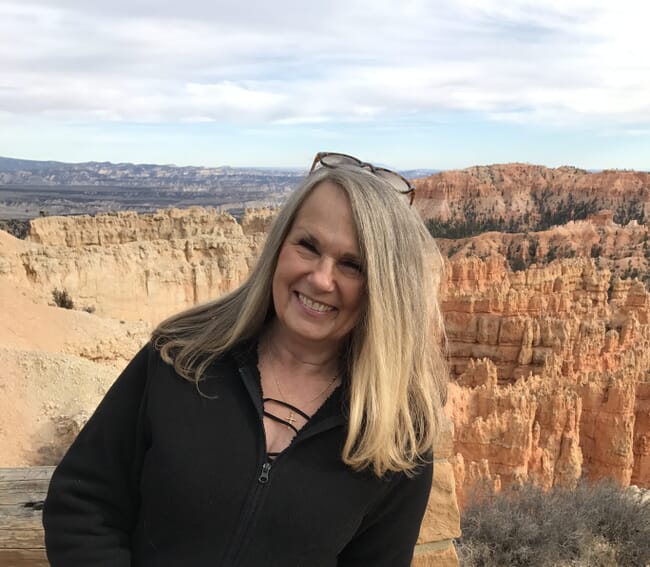
After marriage, I worked for a while in the bait shop that my mother-in-law ran, then began keeping the books for the business. As a young bride, I thought I was supposed to do anything I could to aid and help my husband and his family, to support their business and to attempt to share their heavy workload. There have been lots of blessings as well as regrets. Family businesses can be very complicated and I regret that my mother-in-law misunderstood my desire to help her as an effort to replace her in the business.

I moved into the trucking side of the business through necessity. Back around 2002 we had two CDL [commercial driver’s licence] drivers who had worked through the winter months (our slower season). Then out of the blue, they both came in to the office the same day to tell us that they had better jobs. James looked at me and said: “This will never happen to us again. We’ll get our CDLs for this type of emergency.” Apparently the emergency is still ongoing, because he and I are still driving one of the delivery trucks! I still manage the office work too, though I do have a helper now.
Many things have changed since the farm was established – the 10 acres have expanded to 1,750, of which around 1,200 are water – but it’s still a family business.
What are the main issues involved in producing minnows?
Our farm produces 400,000 to 500,000 golden shiners and black and red tuffies (also known as fatheads) a year. The weather on the farm is one of our challenges – heat, thunderstorms, cloudy days and hot winds can all be troublesome, causing oxygen levels to drop – while it’s also difficult to find people who want to work come sun, rain or ice.
Regional sales are also affected by the weather – with bait sales dropping when it’s too hot or too cold to go fishing; if it’s too windy to be on the lakes; if the lakes are frozen or the ice is too thin. Lifestyles have also changed, with fewer people fishing to feed their families and more doing so as a sport, so there is not the urgency there once was. Another factor is that the majority of the trophy or tournament fishing is now done with artificial, instead of live, bait.
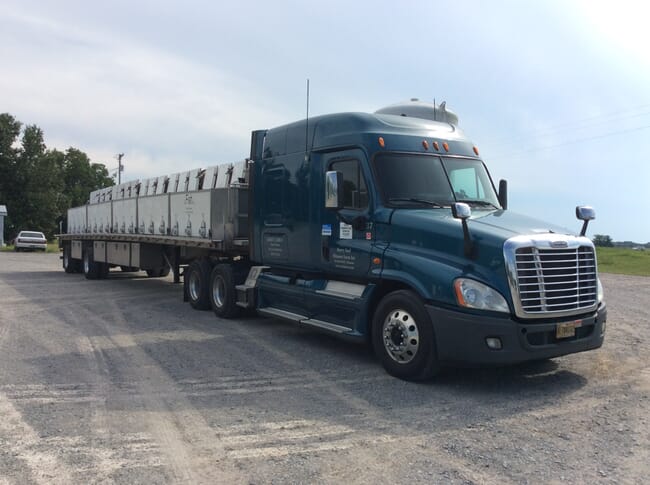
After the weather our biggest challenge is probably birds. Our fish are constantly under attack by birds, ranging from the common blackbird to egrets, herons, pelicans and double-crested cormorants. We enjoy birds as much as anyone and are very aware of the need for conservation in every area of our world, but certain birds can consume a pond of minnows in hours. We spend large amounts of time, money, manpower and effort attempting to protect our crop from the birds and and even though we have permits to harass and harvest certain birds, they are a burden, an expense and extremely messy.
We now have an indoor hatchery, which has cut a lot of worry and production issues. We bring the mats that the minnows lay their eggs on into the hatchery, where the eggs hatch. This diminishes a lot of depredation by bugs and minute critters that eat the eggs.
Describe a typical day in your current role
Busy. There never seems to be a normal day any more, but each day is a challenge. If I’m in the office I arrive at 6am and am busy talking to customers, getting orders, preparing reports and doing paperwork. If I’m on the truck, one day slides right on into the next. My husband and I team drive. We leave the house on Monday morning around 5am. James and the crew begin loading the trucks. I load our food, water, extra clothing etc into our truck and then begin doing the paperwork for the trucks that are loading. It takes myself and my office helper as long to do the paperwork as it does our crew to load two transport trucks.
We leave the farm around 8am and our delivery routes take us through Arkansas, Tennessee, Kentucky, Ohio, Pennsylvania and New York. Since we team drive we run continually, other than stopping to check the minnows, add ice, fuel the truck or unload minnows. We don’t even see several of our customers – they allow us to unlock their facilities and unload the bait, then lock up for them.
I’m also the secretary of the Arkansas Bait and Ornamental Fish Growers Association – a role which involves helping out fellow farmers with their paperwork.
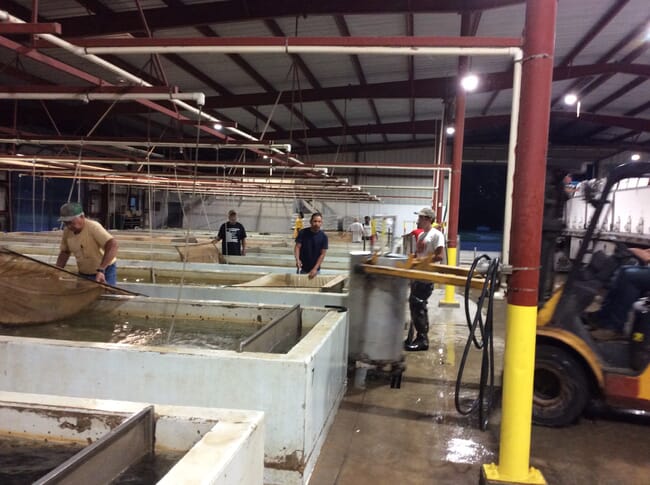
Have you encountered any challenges as a woman in aquaculture/live haul transport?
When I started driving a bait delivery truck there weren’t a lot of women drivers. For some time the Department of Transportation seemed to find it an oddity to see a female driving a fish delivery truck, so they would pull me in at the weight station to question me.
One of my first trips I had a man call the farm wanting to speak to me, so when I got back to the farm a couple days later, I returned his call. He was irate, claiming our truck had run him off the highway. I don’t think I ran him off the road – but when he discovered that a woman was driving, he was outraged, saying that, “A woman isn’t supposed to drive a truck – a woman is supposed to be in the home taking care of her family.”
I’ve also had a few males expose themselves as they manoeuvred their trucks to run alongside me.
How do you cope with all the different state regulations when transporting live fish?
We do our best to keep current on all the state regulations and to have all necessary permits but it’s difficult. There is no way to be certain that a state hasn’t changed their regulations without notifying any of us farmers and haulers. There are several relevant authorities in most states, but none of them ever indicates that you need a permit from any of the others. There is no central area that lists the necessary paperwork, permits or regulations for an individual state, let alone for all the states combined.
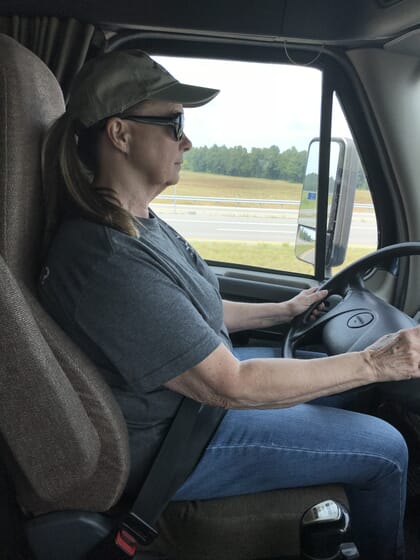
How would you reorganise the legislative minefield if you could?
I would be delighted if all states would adopt the Arkansas Bait and Ornamental Fish Growers Certification Program, which is overseen by the Arkansas State Plant Board. If all states could agree on what regulations need to be met it would be much easier. But since that seems impossible, it would be wonderful if there were at least a single website where the states could list their regulations, permits and licensing requirements.
What are your main markets for your fish?
Wholesale bait distributors – the end users are the fishermen who use our bait. We wouldn’t have a market if it wasn’t for them.
Are there any individuals or organisations in aquaculture who you’ve found particularly inspirational?
Dr Carole Engle, who works in the fisheries department of the University of Arkansas, Pine Bluff and has developed it into one of the best in the nation. She also helped us Arkansas farmers to establish our state bait association and works closely with the extension department. She’s aware of our local challenges as well as the broader political challenges and has looked out for the Arkansas farmers as no one else that I have ever known. She’s very knowledgeable, can speak at least 11 languages, interact with legislators and academia, yet also talk and work with a farmer whose fish are dying.
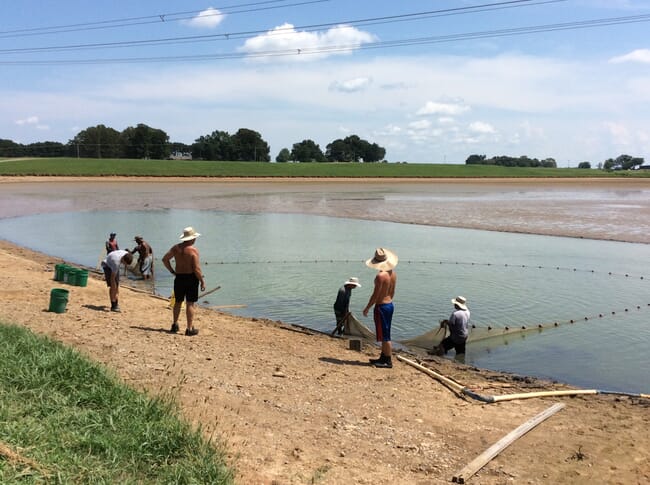
What advice would you give to women looking to start a career in either aquaculture or fish transport?
A woman can do any job that she has an interest in. But delivering fish isn’t like delivering dry freight. It’s not a pull-into-a-warehouse-and-unhook-the-trailer job. It is a fishy job – you will get wet, dirty and smelly.
What would be your dream role in aquaculture and do you think it’s realistic to achieve?
I’m blessed to work with my husband and son on a daily basis. That’s worth so much to me. I was used to working alongside my husband on the farm, and was delighted to do that, but not every couple would like the 24-hour days in the cab of a truck.
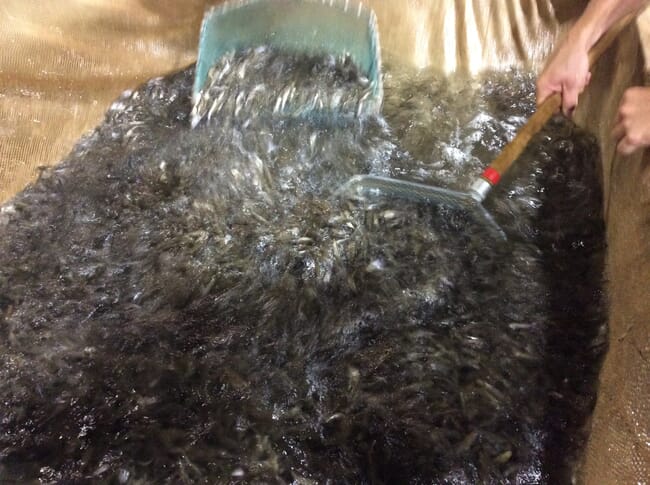
What outstanding challenge facing the aquaculture industry would you most like to solve?
The financial challenge.
What keeps you entertained when you’re not growing and hauling minnows?
Life! We all have the same 24 hours a day; we all fill them in one way or another – some people just seem to be more productive than others. I have a wonderful family that I enjoy being with, friends that I occasionally get to enjoy, and – above all – a faith that keeps me going.


